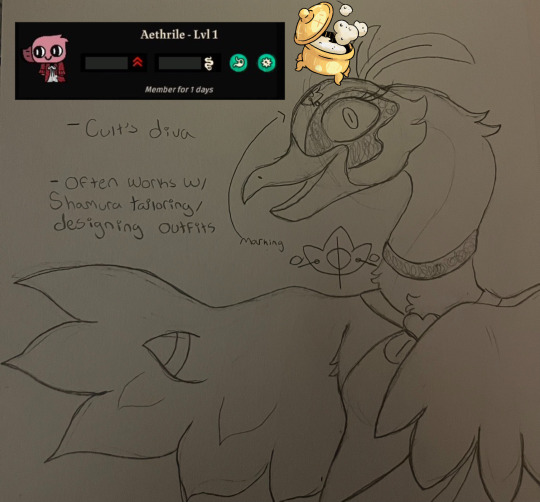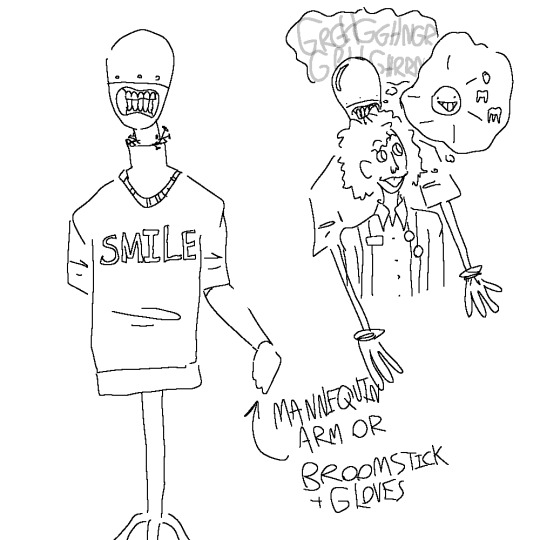#dental design
Explore tagged Tumblr posts
Text
Medical Practice Design: Creating a Healing Environment

In the dynamic world of healthcare, the design of medical practices plays a pivotal role in shaping patient experiences and staff morale. A well-designed medical practice can foster a sense of comfort, trust, and efficiency, ultimately contributing to positive health outcomes.
The Importance of Medical Practice Design:
A thoughtfully designed medical practice can:
Enhance Patient Experience: Create a welcoming and calming atmosphere that reduces stress and anxiety.
Improve Staff Productivity: Provide a functional and ergonomic workspace that promotes efficiency and reduces fatigue.
Optimize Workflow: Streamline processes and minimize bottlenecks to improve patient flow and reduce waiting times.
Foster Trust and Confidence: Convey a sense of professionalism and competence, building patient trust.
Designing a Medical Practice: Creating a Healing Environment
Key Elements of Medical Practice Design:
Several key elements contribute to a successful medical practice design:
Color Palette: Warm and inviting colors can create a welcoming atmosphere, while neutral tones can provide a sense of calm and serenity.
Lighting: Natural light, when available, can enhance the mood and create a more pleasant environment. Artificial lighting should be carefully chosen to avoid harsh shadows and glare.
Materials: High-quality materials, such as natural stone, wood, and ceramic, can add a touch of elegance and sophistication.
Furniture: Comfortable and ergonomic furniture is essential for both patients and staff.
Technology: Incorporating modern technology, such as digital X-rays and patient education systems, can enhance the patient experience and improve efficiency.
Creating a Patient-Centric Environment:
A patient-centric medical practice design focuses on creating a space that caters to the needs and preferences of patients:
Privacy and Comfort: Private consultation rooms and comfortable waiting areas can help patients feel more relaxed and at ease.
Entertainment: Providing amenities such as Wi-Fi, magazines, or TVs can help patients pass the time and reduce anxiety.
Accessibility: Ensuring that the medical practice is accessible to patients with disabilities is crucial for providing inclusive care.
Communication: Clear and effective communication with patients is essential for building trust and ensuring a positive experience.
The Role of Medical Practice Design Professionals:
Medical practice design professionals, such as architects, interior designers, and healthcare consultants, can play a vital role in creating a successful medical practice. They can help:
Develop a Concept: Create a design concept that reflects the practice's values and goals.
Optimize Space: Maximize the use of available space to create a functional and efficient layout.
Select Materials: Choose materials that are both aesthetically pleasing and practical.
Manage the Project: Oversee the entire design and construction process to ensure a successful outcome.
Case Study: A Successful Medical Practice Design:
[Insert a case study of a medical practice that has successfully implemented effective design principles. This could include a brief overview of the practice, the design challenges faced, and the solutions implemented. Highlight the positive outcomes, such as increased patient satisfaction, improved staff morale, and enhanced efficiency.]
Conclusion:
Medical practice design is more than just aesthetics; it is a strategic investment in the success of a healthcare practice. By creating a welcoming, comfortable, and efficient environment, medical practices can enhance patient satisfaction, improve staff morale, and build a strong reputation in the community.
For more information about medical practice design, medical fitouts, medical fit outs, dental design, dental fitouts, please visit the – Commodore Fitouts / Location.
Reference taken from here.
COMMODORE FITOUTS LOCATION: Name: Commodore Dental & Medical Fitouts Address: 166 Arcadia Rd, Arcadia NSW 2159, Australia Phone Number: +61 2 9655 1919 Website: http://www.commodorefitouts.com.au/
0 notes
Text
Crafting Smiles: The Art of Dental Fitouts and Design
Medical Fitouts
September 12 2024, 15:14 8

In today's competitive healthcare landscape, a well-designed dental practice is more than just a pretty face. It's a powerful tool that can enhance patient experience, attract new clientele, and foster a thriving business. Dental fitouts and dental design play a pivotal role in creating such spaces.
Beyond Aesthetics: The Multifaceted Benefits of Dental Fitouts
Dental fitouts go far beyond mere cosmetic enhancements. They encompass a holistic approach that considers:
Patient Experience: Creating a calming and welcoming environment reduces anxiety and promotes patient well-being. Natural light, soothing colors, comfortable seating, and clear communication contribute significantly.
Optimized Workflow & Efficiency: Streamlined layouts, efficient patient flow, and ergonomic workstations ensure smooth operations and maximize staff productivity.
Compliance & Safety: Adherence to stringent dental regulations and safety standards is non-negotiable. This includes accessibility features, infection control measures, and proper dental equipment integration.
Staff Satisfaction & Motivation: Ergonomic design, efficient storage solutions, and designated break areas contribute to staff well-being and job satisfaction, leading to improved patient care.
Branding & Identity: Reflecting your practice's values, specialties, and target audience through cohesive design fosters trust and strengthens your brand identity.
Tailoring the Smile: Considerations for a Successful Dental Fitout
When embarking on a dental fitout, consider these key factors:
Understanding Your Needs: Clearly define your target audience, desired patient experience, and budget before engaging professionals.
Choosing the Right Team: Seek experienced designers and fitout specialists with proven expertise in dental practices.
Collaboration is Key: Foster open communication with the design team, staff, and patients to ensure the final design meets everyone's needs.
Regulatory Compliance: Ensure the fitout adheres to all relevant dental regulations and safety standards.
Technology Integration: Seamlessly integrate dental technology, including digital imaging and patient management systems, for enhanced efficiency and patient care.
Examples of Innovative Dental Design
Creating "sensory gardens" with calming sounds and scents to reduce anxiety.
Implementing interactive screens in waiting areas to educate patients.
Integrating virtual reality technology for phobic patients to manage anxiety.
Designing family-friendly waiting areas with dedicated play spaces for children.
Offering private consultation rooms for enhanced patient privacy.
Investing in a Smile: The Power of Design in Dentistry
Dental fitouts and dental design are not just cosmetic enhancements; they are investments in the future of your practice. By prioritizing thoughtful design, you can create a space that:
Attracts new patients and builds loyalty.
Reduces patient anxiety and improves treatment outcomes.
Increases staff productivity and satisfaction.
Enhances your brand image and reputation.
In today's competitive dental landscape, standing out requires more than just skilled professionals. By embracing the power of dental fitouts and dental design, you can create a space that not only delivers exceptional dental care but also cultivates smiles, trust, and success for your practice.
To know more about the dental design, or dental fitouts We recommend you to visit the Commodore Fitouts, as it is the best medical interior design
0 notes
Text

the serve, and for a dental sticker at that.
#mother#sorry yall i cant find better quality#but that's okay because she's still showing us her degree in cvntology from the university of motherton#I've never seen this cgi (?) for her AND LIKE???? IT'S SO INSANE how dare they hide this and USE IT FOR A DENTAL STICKER#my dentist said she's gonna look for tf stickers specifically for me 😍😍 fingers crossed yall i hope she gets these#OMFG I AM ACTUALLY GOING INSANE OVER THIS STICKER DESIGN#LIKE SHE LOOKS SO FUCKING GOOD?!!?!?!? HOLY MOTHER#words cannot EXPRESS how i feel about this like HI!?!?!??!!?? HELLO 🤭🤭🤭🤭 she lools so good#that's not just a face card that's a whole face economy!!! that's cybertron's bank!!!!#elita one#transformers#elita 1#transformers one#tf one#tf one elita#Elita-1
57 notes
·
View notes
Text




seasonal dynamics
#the wheel of the year#wheel of the year#my ocs#original characters#character art#character design#illustrator#illustration#character concept#basil draws#original art#folk art#pagan holidays#pagan festival#dental surgery recovery means I can finally draw my high little mind out#artists on tumblr#samhain oc#yule oc#imbolc oc#ostara oc#beltane oc#litha oc#lughnasadh oc#mabon oc#cryptid#cryptid art
31 notes
·
View notes
Text

he is thankful for his new nose
#orikan the diviner#though they removed some of his best dental related qualities#its fine..................... im still taking liberties. I love the new design though#I find it much easier to sparse
102 notes
·
View notes
Text
Mouthwash Freak

Design based on pink mouthwash !! The one I have kinda .. burns, so I attempted to work in said feeling.
#art#digital art#original art#artists on tumblr#oc art#character design#epic swag#character art#mouthwash#dental#pink#BL1TZ Broadcast
11 notes
·
View notes
Text






The Darkwood Disciples certainly embody their god 😩😩
#cotl#cult of the lamb#cotl narilamb#cotl oc#next two relic god follower designs 😩#I need to digitalize these someday#nyways I decided whenever Turua first spawned he just saw Kallamar and went I Wanr That Twink Obliterated#Aethrile is pretty chill tho as long as all eyes are on her 😩#I love stupid quotes I find on Pinterest/tumblrskd#in this case it was a tumblr quote I found on Pinterest so#inception 😩😩#n then I got some dental work recently and the recovery has been……. Not Great#So…… hmgmgh hwat if…. Shamura helped…….#ANYWAYS#the Darkwood midbosses finally have designs YIPPEEEE#They’re all siblings I think#with the oldest being Barbatos and the youngest being Amdusias 😩#felt inspired to finally draw them cause I want them to play a role in my next fic 👀#but in the meantime 😩#I wanna digitalize all of my disciple designs soonish hmmngh
18 notes
·
View notes
Text
Dental design is the process of creating beautiful and functional smiles. It's a blend of art and science, combining aesthetic considerations with the latest dental technology. From simple teeth whitening to complex smile makeovers, dental design can transform your appearance and boost your confidence.
To learn more about dental design, we recommend you to visit Commodore Fitouts, as it is a dental & medical workspace specialist.
0 notes
Text
For more information about medical practice design, medical fitouts, medical fit outs, dental design, dental fitouts, please visit the – https://www.commodorefitouts.com.au/
0 notes
Text
The Art of Dental Fitouts and Design
Medicalfitouts
2 min read
·
5 days ago
In the realm of healthcare, dental fitouts and dental design play a pivotal role in shaping the patient experience. Beyond aesthetics, these elements contribute to a functional, welcoming, and memorable practice environment.
Beyond the Smile: The Power of Dental Fitouts
Dental fitouts go far beyond mere cosmetic enhancements. They encompass a comprehensive approach that considers:
Functionality & Efficiency: Streamlining workflows, optimizing patient flow, and ensuring efficient use of space are paramount. Treatment rooms, sterilization zones, and waiting areas need to be designed for practicality and seamless movement.
Patient Experience: Creating a calming and positive atmosphere is key to reducing dental anxiety and promoting patient well-being. Design elements like natural light, soothing colors, and comfortable seating contribute significantly.
Staff Satisfaction & Productivity: Ergonomic workstations, efficient storage solutions, and designated break areas foster a positive work environment for staff, leading to improved morale and productivity.
Branding & Identity: The design should reflect the practice’s values, specialties, and target audience, creating a cohesive brand identity that resonates with patients.
Compliance & Safety: Adhering to stringent dental regulations and safety standards is non-negotiable. This includes accessibility features, infection control measures, and proper dental equipment integration.
Tailoring the Smile: Key Considerations for Dental Design
Target Audience: Understanding your ideal patient demographic helps tailor the design to their preferences and needs.
Practice Philosophy: Align the design with your practice’s ethos and values to create a cohesive and authentic experience.
Functionality & Workflow: Prioritize efficient workflows and patient flow to minimize wait times and maximize productivity.
Patient Comfort: Create a calming and welcoming atmosphere that reduces anxiety and promotes relaxation.
Staff Well-being: Design the space to support staff efficiency and morale, leading to improved patient care.
Technology Integration: Incorporate modern dental technology seamlessly into the design for enhanced efficiency and patient care.
Examples of Innovative Dental Design:
Biophilic Design: Incorporate natural elements like plants, wood, and natural light to create a calming and restorative environment.
Sensory Experiences: Employ calming sounds, aromas, and textures to enhance the patient experience and reduce anxiety.
Technology Integration: Integrate digital screens, interactive elements, and virtual reality technology to enhance patient education and engagement.
Family-Friendly Spaces: Design waiting areas with dedicated play areas for children to make visits more comfortable for families.
Investing in Design: A Rewarding Return
Dental fitouts and dental design are not just cosmetic enhancements; they are investments in the future of your practice. By prioritizing thoughtful design, you can:
Attract new patients and build loyalty.
Reduce patient anxiety and improve treatment outcomes.
Increase staff productivity and morale.
Enhance your brand image and reputation.
Create a memorable and positive patient experience.
In today’s competitive dental landscape, standing out requires more than just skilled professionals. By embracing the power of dental fitouts and dental design, you can create a space that not only delivers exceptional dental care but also inspires confidence, trust, and loyalty.
Remember, a well-designed dental practice is more than just a place for treatment; it’s a haven for healing smiles.
To know more about the dental design, or dental fitouts We recommend you to visit the Commodore Fitouts, as it is the best medical interior design
0 notes
Note
Ask for Mustache Master:
What is your opinion on burgers?

bad for your teeth. remember to brush 3 times a day, reader.
#sorry i haven't settled on a design for him yet#he might receive a haircut eventually....#parappa the rapper#beard burger master#parappa au#parappa the rapper au#ptr#ask blog#parappa#parappa 2#mustache dental master#🍪
14 notes
·
View notes
Text

#decoration#design#interior design#ad#furniture#interiors#panel#style#decor#dentist#dental clinic#white#bearbrick#foxeia#frachella
10 notes
·
View notes
Text
Why are teeth so expensive to fix??
And why can I not just yank the fecker out and grow a new one??
#bc rambles#dental care#I want to complain to the management#This design is inefficient#I want to be a shark
9 notes
·
View notes
Text

I’m scared of the dentist
#artwork#digital art#teeth#dentist#im scared#weirdcore#weird art#weird dreams#drawing#artists on tumblr#my art#digital illustration#doodle#art#scream#weird stuff#im afraid#weird feeling#dream#dreamcore#crisis core#tooth extraction#dental#toothache#procreate#digital drawing#design#art commisions#commission
17 notes
·
View notes
Text


Albert Plak, traveling dental health educator and Smiler, his homemade and posessed (not Albert's fault) "teaching assistant". They're each other's only friend 🦷
#mars says stuff#character design#monster design#kinda#possum if the main guy was full of whimsy and joy#Smiler is a dental training head that Albert nailed to a tailor's dummy. he has a collection of teeshirts#tw f slur#i fucking guess
23 notes
·
View notes
Text
This is the story of Ms. Dianne & Mr. David who travelled all the way from the UK to Stunning Dentistry - Ranked No.1 Dental Clinic in India.
From finding dentists in England to reaching Stunning Dentistry India, here's a glimpse of their journey.
This is a story about building confidence and life long bonds.
#dentist#dentistry#smile#dental#teeth#smile design#braces#tooth#aligners#invisalign#london#england#uk tour#united kingdom#composite bonding#teeth veneers#porcelian veneers#smile makeovers#smile makeover#smile correction
3 notes
·
View notes